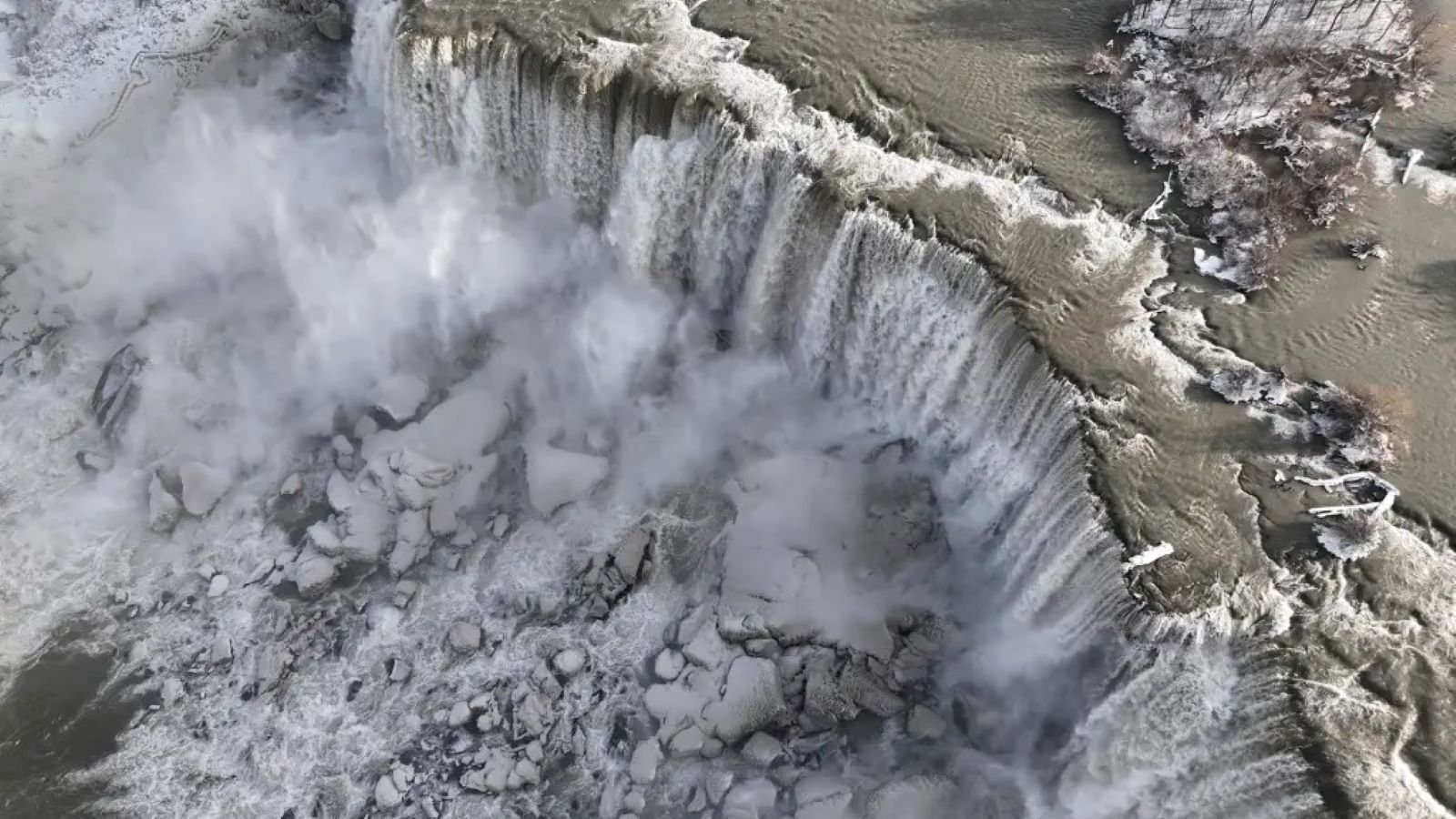Niagara Falls, one of the most attractive destinations that separates the United States from Canada, partially froze over Tuesday in the wake of an arctic blast which covered Western New York in ice.
Although Niagara Falls did not freeze over completely, the subzero temperatures transformed the nation’s oldest national park into a winter wonderland.
In response to the icy event, tourists flocked to the Niagara in droves hoping to catch a glimpse of the spectacle. Each year, Niagara Falls attracts over 9 million visitors and is one of the most popular places to propose. However, many visitors choose to visit during the summer months.
After viewing the frigid falls, one visitor from California tweeted that the “intriguing and surreal arctic experience” had ice thick enough to walk across the American-Canadian border.
This is not the first time the Niagara Falls have partially frozen. In a similar freeze in 2015, a Canadian ice climber scaled a frozen section of the falls much to the amazement of onlookers.
Although the falls appear to be frozen, water still moves underneath the large sheets of ice. Niagara Falls has only completely frozen over one time in recorded history during an 1848 winter storm and the river stopped flowing for a total of 30 hours.
Niagara Falls typically does not freeze over because of its massive scale. Niagara Falls consists of three waterfalls: Horseshoe Falls, American Falls and the Bridal Veil Falls. Each second, 3,160 tons of water flows over the three waterfalls, which have a maximum height of 176 feet.
While tourists stand in awe of the rare spectacle, many in Buffalo are still recovering from the same winter storm located just 20 miles south of Niagara Falls.
Nearly 37 residents of Buffalo, New York, have passed away from freezing temperatures. However, as the National Guard conducts welfare checks, the death toll is expected to rise.
The surrounding area of New York weathered three days of consecutive snowfall, widespread power outages, and 70 mph winds. In total, Niagara Falls and Buffalo were covered by 4 feet of snow — the largest storm since the Blizzard of 1977, as reported by The Dallas Express.







Must be global warming!